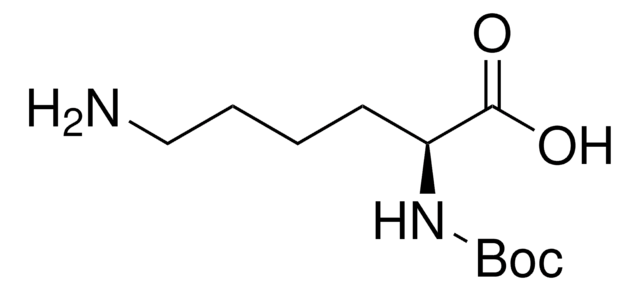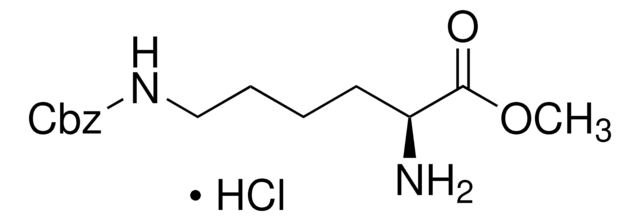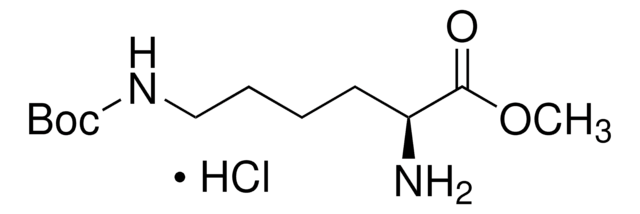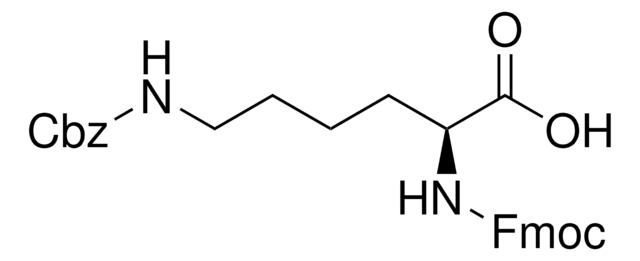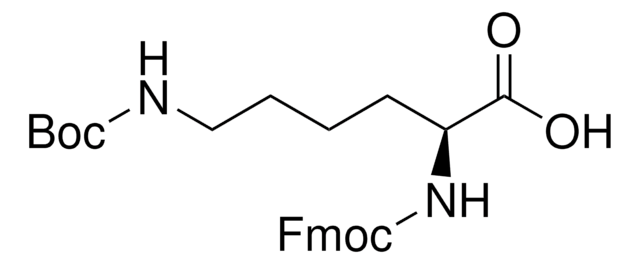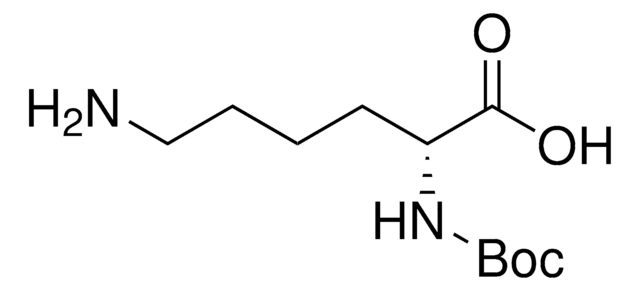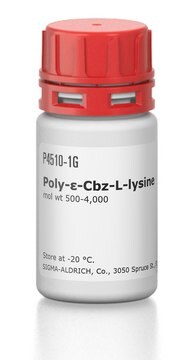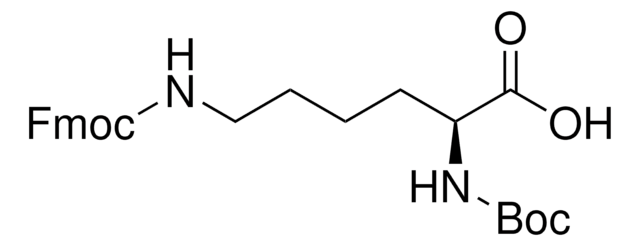96840
H-Lys(Z)-OH
≥99.0% (NT), for peptide synthesis
동의어(들):
Nε-Z-L-lysine, N6-Carbobenzyloxy-L-lysine
로그인조직 및 계약 가격 보기
모든 사진(1)
About This Item
Linear Formula:
C6H5CH2OOCNH(CH2)4CH(NH2)COOH
CAS Number:
Molecular Weight:
280.32
Beilstein:
2222482
EC Number:
MDL number:
UNSPSC 코드:
12352209
eCl@ss:
32160406
PubChem Substance ID:
NACRES:
NA.22
추천 제품
제품명
H-Lys(Z)-OH, ≥99.0% (NT)
분석
≥99.0% (NT)
양식
powder
광학 활성
[α]20/D +15.5±1°, c = 1% in 1 M HCl
반응 적합성
reaction type: solution phase peptide synthesis
mp
259 °C (dec.) (lit.)
응용 분야
peptide synthesis
SMILES string
N[C@@H](CCCCNC(=O)OCc1ccccc1)C(O)=O
InChI
1S/C14H20N2O4/c15-12(13(17)18)8-4-5-9-16-14(19)20-10-11-6-2-1-3-7-11/h1-3,6-7,12H,4-5,8-10,15H2,(H,16,19)(H,17,18)/t12-/m0/s1
InChI key
CKGCFBNYQJDIGS-LBPRGKRZSA-N
유사한 제품을 찾으십니까? 방문 제품 비교 안내
일반 설명
H-Lys(Z)-OH also known as N6-carbobenzyloxy-L-lysine, commonly used as a reagent in the synthesis of peptides.
애플리케이션
H-Lys(Z)-OH serves as a reactant for the synthesis of various peptides such as boc-Glu(OBzl)-Lys(Z)-OH and tert-butyl-6-(((benzyloxy)carbonyl)amino)-2-bromohexanoate. Additionally, it is used in the Fuchs-Farthing method to synthesize lysine NCA, which is a block copolymer.
Storage Class Code
11 - Combustible Solids
WGK
WGK 3
Flash Point (°F)
Not applicable
Flash Point (°C)
Not applicable
개인 보호 장비
Eyeshields, Gloves, type N95 (US)
이미 열람한 고객
R L Hanson et al.
Applied microbiology and biotechnology, 37(5), 599-603 (1992-08-01)
Biotransformations were developed to oxidize N epsilon-carbobenzoxy(CBZ)-L-lysine and to reduce the product keto acid to L-CBZ-oxylysine. Lysyl oxidase (L-lysine: O2 oxidoreductase, EC 1.4.3.14) from Trichoderma viride was relatively specific for L-lysine and had very low activity with N epsilon-substituted derivatives.
J Zheng et al.
Biotechnology progress, 16(2), 254-257 (2000-04-08)
Poly(epsilon-CBZ-L-lysine) can be mixed with biodegradable polymers such as poly(D,L-lactic-co-glycolic acid) or poly(L-lactic acid) and formed into films, foams, or microspheres. Surface amino groups may then be deprotected with acid or lithium/liquid ammonia. The amino groups serve as a method
J Zheng et al.
Biotechnology progress, 15(4), 763-767 (1999-08-12)
Microspheres were formed from blends of the biodegradable polymer poly(DL-lactic-co-glycolic acid) (PLGA) together with poly(epsilon-CBZ-L-lysine) (PCBZL) by a double-emulsification/solvent evaporation technique. The size of the microspheres formed by this method was dependent both on the total concentration of the polymers
Christopher D Reinkemeier et al.
Cell, 184(19), 4886-4903 (2021-08-26)
Engineering new functionality into living eukaryotic systems by enzyme evolution or de novo protein design is a formidable challenge. Cells do not rely exclusively on DNA-based evolution to generate new functionality but often utilize membrane encapsulation or formation of membraneless
자사의 과학자팀은 생명 과학, 재료 과학, 화학 합성, 크로마토그래피, 분석 및 기타 많은 영역을 포함한 모든 과학 분야에 경험이 있습니다..
고객지원팀으로 연락바랍니다.